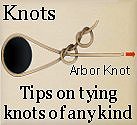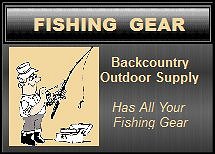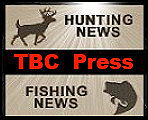The country's premier hunting and fishing daily news
The Backcountry Press
BACKCOUNTRY PRESS is the country's premier daily hunting, fishing & outdoor news in the USA, Canada and more. Read whats happening in your neck of the woods & beyond.
For those who provide updated information in the field of hunting & fishing, please don't hesitate to contact us to get your articles added to our site.
The Backcountry Outdoor News reports the latest hunting & fishing news along with fishing derbies & tournaments
from:
| ||||||
| ||||||
|
Article -15-1327
© 2010 Backcountry Press Outdoor News - All Rights Reserved
Disclaimer: The views expressed on this site are that of the authors and not necessarily that of The Backcountry Press Outdoor News
Connect With Us
Loading
Bowhunting Safety Tips
Submitted by: Backcountry Press Outdoor News
Every year archery hunters injure themselves and most of the accidents are caused by archers doing one of two things:
- not being safe in tree stands or
- having arrows out of their quiver, before they're ready to shoot.
To help you avoid these accidents, Kirk Smith, Hunter Education coordinator for the Utah Division of Wildlife Resources provides the following advice:
* If you're going to hunt from a tree stand, make sure the tree is big enough to hold your weight. "Don't climb the tree unless you're certain it will hold your weight," he says.
To lessen the chance that you'll fall while climbing the tree, leave your bow, arrows and other equipment on the ground, and attach a haul line to them. Also, be sure to use an approved safety harness (also called a fall arrest system). Make sure to secure yourself to the tree as soon as you leave the ground.
"Once you reach your stand," Smith says, "attach your safety harness to your final location. Then, use your haul line to lift your gear to you."
Smith encourages you to not build a "permanent" tree stand. Instead, use a portable stand. "Overtime," he says, "permanent tree stands can deteriorate and become unsafe. And they clutter the landscape. Also, you can damage or kill trees by hammering nails into them."
* If you're hunting on a national forest or on land managed by the Bureau of Land Management in Utah, you'll have to use a portable tree stand — permanent tree stands are illegal.
Until you're ready to shoot, keep your arrows in a quiver that has a hood that covers the broadheads. Smith says one of the most common accidents he sees is archers jabbing themselves or other hunters while carrying arrows in their hand or nocked on their bow string. "Until you're ready to shoot," he says, "keep your arrows in a quiver."
Most State laws requires that arrows be kept in a case while the arrows are in or on a vehicle.
Preparation
- Equipment checks–make sure the laminations on your bow are not flaking or separating. And make sure the strings on your bow are not fraying. If you have a compound bow, make sure the pulleys and cables are in good shape. Also, make sure your arrow's spline (the stiffness of the arrow's shaft) matches your bow's draw weight. If your bow's draw weight produces more force than your arrow can handle, your arrow will probably fly off target.
- Broadhead sharpening–when you sharpen your broadheads, take your time, and be careful. Your broadheads need to be razor sharp. But make sure you don't cut yourself while sharpening them.
- Practice shooting as much as possible. Use the same broadheads you'll use during the hunt.
- Obtain written permission from private landowners before hunting on their property or using their property to access public land.
- Know the boundaries of limited-entry units and other restricted areas in the area you're going to hunt.
Its also a good idea no matter your experience to take an Online Bowhunter Education Safety Course. Some states require it. Even if your an experienced archer its serves as a good refreser course. Some states have their own bowhunting education programs.














